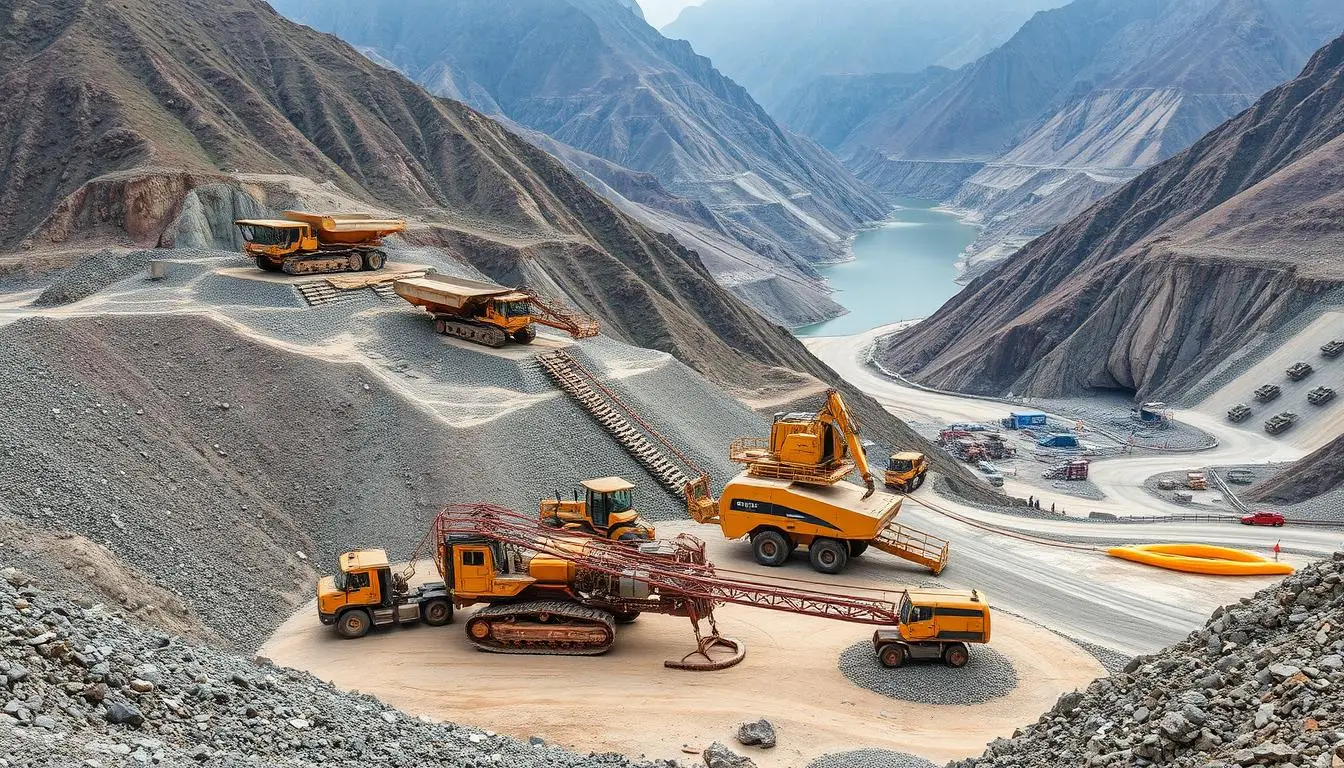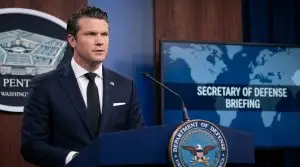China Denies Trump Tariffs, Halts Rare Earth Mineral Exports
China retaliates on trade, suspending exports of China Rare Earth Mineral amidst escalating tariff disputes with the US.

China Rare Earth Mineral Exports to U.S
Click to summarize this article.
China Halts Rare Earth Mineral Exports: Beijing denies Donald Trump’s tariffs, yet signals a halt and selective flow on the lifeblood metals of our era. These are the quiet threads under our screens and roads—rare earth metals that make phones hum, EV motors spin, and radars see. What happens when denial and disruption walk side by side?
The day felt charged. President Trump said the United States was “pretty close to doing a deal” with India and hinted at reducing duties there, while touting a tariff “dividend” of up to $2,000 for most households. He even admitted Americans are “paying something,” though he called the overall impact a win. Treasury Secretary Scott Bessent floated tax cuts as a path to that dividend, and economist Joseph LaVorgna warned that tearing down duties could rattle markets. The Supreme Court pressed on the limits of presidential power over sweeping tariffs. If those tools fall, what fills the gap? More on the effect of U.S. tariffs on China.
Across the Pacific, a US–China trade truce flickered. Both sides paused certain maritime probes and suspended special port fees for a year, even as the White House moved to block sales of Nvidia’s scaled-down AI chip to China. The Wall Street Journal reported that Beijing may ease flows of restricted materials while excluding firms linked to the U.S. military—an opening with a lock. In that context, the stakes of China’s Rare Earth Mineral policy feel personal. Restaurant owners, dock workers, chip designers, families waiting on relief—each rides the tide of tariff politics, not just the theory.
Supply chains feel the pressure point. When China’s rare earth mineral exports narrow or reroute, the ripple hits assembly lines and everyday prices. It reaches far beyond headlines into the gears of life. For a grounded view of how licensing shapes the pipeline of rare earth resources in China, see this update on suspended restrictions and ongoing permits. If the US–China trade truce holds, even loosely, it may buy time—but not certainty.
So I ask: is this peace, or a quieter kind of contest? The answer may hinge on rare earth metals and the choices leaders make in the next few weeks, not years.
Key Takeaways
- Beijing denies Trump’s tariffs while tightening and channeling rare earth flows, sharpening supply risk.
- Tariff politics at home collide with Supreme Court scrutiny, raising the stakes for alternative trade tools.
- A tentative US–China trade truce pauses some maritime measures but leaves core tech tensions intact.
- Licensing shapes the development of rare earth resources in China, even amid reported easing for select buyers.
- Nvidia faces continued sales limits in China, underscoring how chips and minerals drive leverage.
- Shifts in China’s rare earth mineral exports could nudge prices from smartphones to EVs.
- Household hopes for a tariff “dividend” meet the real costs borne across supply chains.
Trade Truce Signals: Rare Earth Metals, Tariff Politics, and a Shifting US–China Agenda
I keep thinking about a US–China trade truce. It’s a pause, but the stakes are high. Rare earth metals and trade ports are at the center.
And underneath it all, the world watches the rare earth elements market like a barometer. If China’s rare earth supply becomes more stable, what implications does this have for us?
US–China thaw: suspension of additional controls on rare earth metals and paused maritime probes
Crane activity slows, then picks up again. Export controls and maritime probes pause for a year. It’s a small step towards relief for all involved.
But is this pause a sign of peace? Not yet. The thaw can turn back to ice.
China’s reported plan to ease the flow of rare earths while excluding firms tied to the US military.
China’s gate opens, but not for everyone. Easing rare earth flows seems generous, but with a catch. Companies linked to the Pentagon are excluded.
This selective approach creates a new map—green lights for some, red lights for others. The rare earth market reacts quickly to every signal.
Policy crosscurrents: Trump’s “reciprocal tariffs,” Supreme Court scrutiny, and possible fallback trade tools
In Washington, “reciprocal” is a buzzword. The Supreme Court questions the limits of tariffs. If the scope narrows, other tools are ready.
Lower duties on Indian goods mix with tariff “dividends.” Can incentives and penalties harmonize?
AI and tech context: US guidance blocking sales of Nvidia’s latest scaled-down AI chip to China
Guidance blocks Nvidia’s AI chip from China. This contrasts with easing controls on rare earths. It’s a complex situation.
Two clocks tick in parallel. One for trade, the other for tech. The US–China truce is more of a temporary arrangement than a definitive end.
If strategy is a landscape, China’s strategic minerals are its ridgelines—and every step along them changes the view.
China Rare Earth Mineral Supply: Market Impact, Strategic Resources, and Sustainable Mining
I imagine a vast switchboard when I think about the rare earth elements market. One lever moves, and the room hums. Signals from Beijing shift tone, and I feel how prices, shipping, and jobs respond in echo. Is this how power flows now—through minerals, permits, and quiet memos?
It’s personal because supply chains touch people. The Chinese mining industry might seem distant, yet its pulse decides factory weeks in Ohio and lab schedules in California. I keep asking: can we hold both resilience and fairness in the same hand?

Production leadership, deposits, and strategic positioning
China’s edge began in the ground, with significant rare earth deposits and extensive processing skills built upon them. That base now underwrites China’s strategic minerals policy, allowing leaders to fine-tune flows like a skilled DJ. When I read about new restrictions on magnets and heavy, I see leverage, not just logistics.
Rare Earth Resources: China’s Geology and Statecraft. Add deep refining expertise, and rare earth minerals production becomes a driving force for entire sectors—energy, autos, defense. The lesson feels simple: rocks matter, but rules decide the rhythm.
Market outlook amid eased controls versus targeted exclusions
If controls loosen while exclusions remain, the rare earth elements market experiences short bursts of activity. Prices ease for general grades, then jump for defense-linked inputs. I imagine warehouses reshuffling lots, separating what’s ordinary from what’s sensitive.
Those carve-outs signal priorities. They cool broad anxiety yet keep pressure on strategic buyers. For me, it reads like a map: open lanes for standard alloys, toll roads for high-spec magnets and powders.
Industry dynamics and production bottlenecks
The real chokepoints rarely sit at the mine mouth. They hide in separation plants, environmental reviews, and export licenses. Even with big ore, rare earth minerals production slows when processing capacity stalls.
That’s where the Chinese mining industry meets paperwork. One directive, and shipments shift course. A calmer sea lane helps, but a single policy tweak can turn the valve. Bottlenecks, I’ve learned, are as human as they are metallic.
Sustainability and risks for US-linked companies
Sustainable rare earth mining feels like both a compass and a shield. Cleaner projects at home or with close partners can reduce reliance on rare earth resources in China, even if the initial costs are higher. The payoff is moral clarity and steadier timelines.
Yet policy risk lingers for firms with U.S. ties. Targeted rules can reroute orders overnight. I keep circling the same question: can we fund greener capacity fast enough to soften each shock, and can we do it without fraying dignity on the shop floor?
- Key tension: speed versus stewardship in sustainable rare earth mining.
- Practical step: diversify suppliers while investing in refining and recycling.
- Human aim: predictable work, transparent rules, and fewer sudden breaks.
China Halts Rare Earth Mineral Exports: Conclusion
I keep coming back to one word: control. The US–China trade truce quiets the noise, yet the edges stay sharp. We see pauses on probes and softer rules for some shipments, while firms linked to defense face closed doors.
At the same time, Washington blocks chips and recalculates tariff policies. In a week of bold claims and second thoughts, the rare earth elements market feels like a chessboard in motion.
That motion is reflected in prices, hedges, and policy signals. China’s vast processing base and new export limits meet a U.S. push to onshore magnets and diversify supply. Public money has flowed to projects like MP Materials, with long off-take deals that set a floor under risk and a bet on resilience.
As one analysis of China’s rare earth mineral strategy suggests, partial openings and targeted exclusions can coexist. The result? Relief for some buyers, a more challenging road for those near the security line.
But policy is never abstract for long. A chef stares at duty-laden invoices, a trader reroutes a container, and an engineer redesigns around a missing part. I ask myself: What would a wiser path feel like?
Perhaps it’s a steady investment in sustainable rare earth mining, recycling programs that alleviate pressure on ore, and a patient approach to refining capacity. Maybe it’s treating a truce as breathing room, not a victory lap, so the rare earth elements market becomes less brittle and more fair.
In the end, power tends not to vanish; it rearranges. If tariffs are reduced, other tools will likely rise. The question is whether we can build trust while we build supply.
A recent analysis by Wood Mackenzie on export controls and critical minerals reveals how regulations impact batteries and magnets, reshaping routes and timelines across the Pacific. In that light, a measured blend of diversification, dignity, and clear rules might serve both sides.
Between the mine and the motherboard, between tariff politics and daily life, we have a choice. To make stability the point of the US–China trade truce, and to anchor it in sustainable rare earth mining that lasts.
More Political News.








